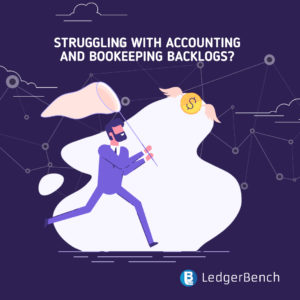
Finance, Small Business
In the light of the current COVID-19 pandemic, the federal government has given a breather to all small business owners in the US with the Economic Injury Disaster Loan (EIDL). It is designed to give relief to business owners who have been impacted by a loss of revenue in this time and therefore is offering an advance of $10,000. The borrowers will not have to repay this advance loan amount.
What is the SBA Disaster Loan Program?
The SBA disaster loan program is a relief program by the US government to support small business owners who have been affected by COVID-19 and incurred losses in revenue. This relief is extended to proprietors, independent contractors and all small businesses, etc.
The maximum limit of loan dispersal is $2 Million if you have been hit by the pandemic majorly. The interest rate for the loan is at 3.75% on qualification for businesses and 2.75% for non-profit organizations. These loans have long terms ranging from 15-30 years, so that they are accessible and viable to everyone.
10 Ways Your Bookkeeper Can Help You Through Covid-19
Who Can Apply for the Loan?
Any small business, across the different states of the United States can apply for the SBA loan. But, due to the current lack of funding, the loan applications have temporarily been closed and are available only to the agricultural industry for fresh applications.
Currently the major preference is on a first come first serve basis and the upper hand is being given to business’ in the agricultural sector. Those applications had been closed by April 15 and were in the process of being under consideration.
Although, with a fresh round of funding from the Congress, the process has been resumed once again. Here are some of the key points that you ought to know:
- Agricultural businesses that are engaged in the production of food and fiber, ranching, and raising of livestock, agriculture, and all other farming and agricultural related industries (as defined by section 18(b) of the Small Business Act (15 U.S.C. 647(b)).
- SBA is encouraging all eligible agricultural businesses with 500 or fewer employees wishing to apply to begin preparing their business financial information needed for their application.
How to Apply for an SBA Loan?
You can go to the SBA’s Disaster loan portal (simply click here). There are no submission of forms that are required at this time, and can also get an EIDL emergency grant of $10,000 within 3 days of application. (As stated above, you are not required to repay this initial grant, irrespective of whether you are able to qualify for the SBA loan eventually or not.)
Upon application, your credit rating is assessed, and your income and tax statements are checked to see the extent of your need for the loan. For loans above $200,000 the lender can expect you to submit a collateral. For loans under $200,000 there is no need to necessarily submit a collateral to the lender, unless you feel you want to wilfully increase the chances of getting the loan.
A very important point to note, that if you submit enough collateral, you will get the SBA loan, but it is dependent on how much the assessor feels you are in need of and can thus be levied to you.
Steps to File the SBA Loan Application:
- Complete the initial application online.
- Gather all the necessary documents required hereon.
- Once the SBA assesses your credit, it asks you for additional documents.
- Let us now look at the detailed steps to file the form:
Section 1: Disclosures:
Select the type of business you are applying for, and check off all the eligibility requirements as given there.
Section 2: Business Information:
Filling this will require you to have your income statement as of January 31, 2020 with you.
- Add your legal name (as on your tax return)
- Your business phone number
- Gross Revenues for the 12 months before date of disaster (January 31, 2020)
- Cost of goods for the 12 months prior to date of disaster (January 31, 2020)
- Any grants received.
- The sections marked with a red star, need to be filed only if they apply to your business.
Section 3: Business Owners Information
First, mention if your business is owned by another business. If it is owned by individuals, you need to fill out owner sections for each member owning more than 20% or more of your business.
The following personal information needs to be added:
- Social Security Number
- Date of Birth
- Place of Birth
- Citizenship
- Residential Street Address
Section 4: Additional Information
- Mention if anyone has been involved in any criminal charges.
- Fill out the section in blue, if you have hired someone to file the application for you. (Including an employee.)
- Select the box to select the advance payment of $10,000
- Check your banking information
Wrapping Up
Currently the SBA disaster loan is open only to agricultural businesses, but we hope that soon this opens up for the larger majority and all businesses alike are able to make out of this pandemic smoothly. The SBA disaster loan is the federal government’s attempt to help businesses gain security, protection and safety during the pandemic.

Accounting, Bookkeeping, Bookkeeping Services, Finance, Small Business
In the wake of the Coronavirus Aid, Relief, and Economic Security Act (CARES Act), the United States has conferred an additional $310 billion funding to the Paycheck Protection Program (PPP) that was almost running out of funds in April. The importance of PPP is ever-important in these times of economic uncertainty as PPP is one of the few opportunities that small businesses have to obtain forgivable loans to sustain employees on the Payroll.
But, there are so many questions that are yet to be answered and cleared for entrepreneurs, especially in the light of the forgivable nature of the PPP loans.
Another burning issue here is the grey area, where many public companies confessed to having taken the PPP loan which was truly meant for small businesses with employees less than 500.
To contain such malpractices, the federal government has come out with the briefing that the authorities will audit any company that levies for loans more than $ 2 Million.
This blog will provide answers to all the commonly asked questions and queries related to the PPP loan and how it can benefit your business.
Question 1: What costs are eligible for forgiveness under the PPP?
Answer: The actual forgivable part of the PPP is dependent on certain factors. These are based on the payments made and the costs incurred during the COVID-19. These are the costs that are eligible for forgiveness in the PPP loans:
- Salary and wages or other similar payroll compensations.
- Payments that have been made in the light of sick leaves.
- Allowance for separation.
- Payments made for group health care benefits, including insurance premiums.
- Retirement benefits
- State or federal payroll taxes
- Please note that cash compensations that exceed $100,000 are exempted from this excuse. Additionally, the employer’s share of the federal payroll taxes is also exempted from being forgiven under the PPP.
Question 2: What costs are not eligible for forgiveness under the PPP?
Answer: Although the PPP loan is a breath of fresh air for businesses who are trying hard to genuinely retain their employees, there are still certain costs that are exempt from being forgiven under the PPP loan. These are:
- Payments made to independent contractors.
- Under the Family First Coronavirus Response Act, there are qualified sick leaves and parental leave wages. These, therefore, are exempt from the forgiveness under the PPP.
- If we take February 15, 2020, as the benchmark date; then any interest payments on personal property, rent payments under agreements in existence, and utility payments like electricity bills, etc. are also not permitted for forgiveness under the PPP loan.
You May Also Read – 10 Ways Your Bookkeeper Can Help You Through Covid-19
Question 3: What are the limitations of loan forgiveness?
Answer: There certainly are limits to forgiveness in the PPP loans. The first is that not more than 25% of the loan forgiveness can be linked to non-payroll costs. Additionally, proceeds directed towards advance up to $10,000 on Economic Injury Disaster Loan will also be deducted from the loan forgiveness amount.
There are two formulas to determine the forgiveness amount in the loan deduction. The FTE Method and the reduction in wages.
The loan forgiveness amount is subject to reduction by multiplying it by the following fraction. These are as follows: (This is known as the FTE method)
- The numerator of which is the average number of FTE employees per month employed by the borrower during the covered period.
- The denomination of which, as elected by the borrower is:
-
- The average number of FTE employees per month (from Feb 15, 2019, to June 30, 2019)
- The average number of FTE employees per month (Jan 1, 2020, to Feb 29, 2020)
The second is the reduction of wages method. This method is applicable as follows:
- Identify employees who did not receive the salary at an annualized rate of more than $ 100,000 for a single day in 2019.
- Compare each covered employee’s wages during the period to his/her salary during the first quarter of 2020.
- For an employee who is covered, the salary is reduced by more than 25%, then you need to apply the following formula:
-
- Multiply the first-quarter wages by .75
- Subtract the result from the covered period wages
- The aggregated dollar amount will reduce the loan forgiveness amount.
Question 4: What are the documents that you need to apply for forgiveness?
Answer: To receive the loan forgiveness, you need to comprehensively submit accurate copies of the following documents, complete and updated:
- Documentation to verify the number of FTE employees on the payroll. This also includes the payroll tax filings.
- Canceled checks, payment receipts, and transcripts of accounts verifying payments of mortgages, rent and utility payments.
- You also need to submit an authentication certificate from a representative of the business that certifies that the information and documents submitted are accurate and the amount that is requested for forgiveness, will help retain employees.
- In addition to these, the SBA can also ask you to submit additional documents to solidify and authenticate your case.
Question 5: Are large businesses with adequate sources of liquidity qualify for a PPP loan?
Answer: No, the essence of PPP loans was to help small businesses, retain employees, and sail through these financially crunching times of COVID-19 smoothly. If larger businesses, who have enough sources of liquidity take this PPP loan, then the small businesses will be crushed under undue competition. Hence, as per the federal laws, for any business that takes up a loan above $ 2 Million dollars, will have to undergo a complete audit.
What Does Your Business Need?
The essential element in COVID-19 is to sail through with as little damage as possible. With the PPP loan and the secure ability to seek forgiveness on the loan is a boon in these times. You need to seek spaces where you can seek the maximum benefits and forgiveness on the PPP loans. We hope that your essential queries were answered and cleared through this blog. For any additional query and query on the PPP loans and how it affects your business, please click here.



